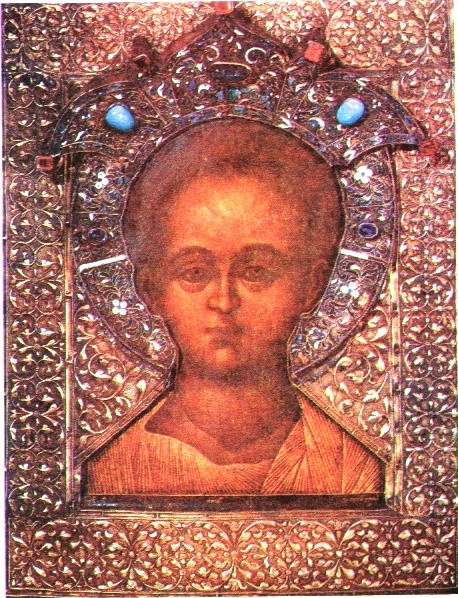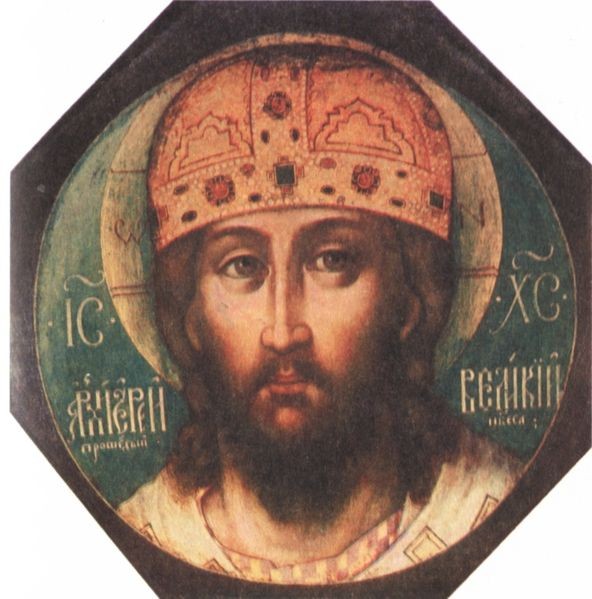Simon Ushakov (Cимон [Пимен] Фёдорович Ушаков) (1626-1686)
Get a Simon Ushakov (Cимон [Пимен] Фёдорович Ушаков) (1626-1686) Certificate of Authenticity for your painting (COA) for your Simon Ushakov (Cимон [Пимен] Фёдорович Ушаков) (1626-1686) drawing.
For all your Simon Ushakov (Cимон [Пимен] Фёдорович Ушаков) (1626-1686) artworks you need a Certificate of Authenticity (COA) in order to sell, to insure or to donate for a tax deduction.
Getting a Simon Ushakov (Cимон [Пимен] Фёдорович Ушаков) (1626-1686) Certificate of Authenticity (COA) is easy. Just send us photos and dimensions and tell us what you know about the origin or history of your Simon Ushakov (Cимон [Пимен] Фёдорович Ушаков) (1626-1686) painting or drawing.
If you want to sell your Simon Ushakov (Cимон [Пимен] Фёдорович Ушаков) (1626-1686) painting or drawing use our selling services. We offer Simon Ushakov (Cимон [Пимен] Фёдорович Ушаков) (1626-1686) selling help, selling advice, private treaty sales and full brokerage.
We have been authenticating Simon Ushakov (Cимон [Пимен] Фёдорович Ушаков) (1626-1686) and issuing certificates of authenticity since 2002. We are recognized Simon Ushakov (Cимон [Пимен] Фёдорович Ушаков) (1626-1686) experts and Simon Ushakov (Cимон [Пимен] Фёдорович Ушаков) (1626-1686) certified appraisers. We issue COAs and appraisals for all Simon Ushakov (Cимон [Пимен] Фёдорович Ушаков) (1626-1686) artworks.
Our Simon Ushakov (Cимон [Пимен] Фёдорович Ушаков) (1626-1686) paintings and drawings authentications are accepted and respected worldwide.
Each COA is backed by in-depth research and analysis authentication reports.
The Simon Ushakov (Cимон [Пимен] Фёдорович Ушаков) (1626-1686) certificates of authenticity we issue are based on solid, reliable and fully referenced art investigations, authentication research, analytical work and forensic studies.
We are available to examine your Simon Ushakov (Cимон [Пимен] Фёдорович Ушаков) (1626-1686) painting or drawing anywhere in the world.
You will generally receive your certificates of authenticity and authentication report within two weeks. Some complicated cases with difficult to research Simon Ushakov (Cимон [Пимен] Фёдорович Ушаков) (1626-1686) paintings or drawings take longer.
Our clients include Simon Ushakov (Cимон [Пимен] Фёдорович Ушаков) (1626-1686) collectors, investors, tax authorities, insurance adjusters, appraisers, valuers, auctioneers, Federal agencies and many law firms.
We perform Simon Ushakov art authentication, appraisal, certificates of authenticity (COA), analysis, research, scientific tests, full art authentications. We will help you sell your Simon Ushakov or we will sell it for you.

Simon Ushakov was was a leading Russian graphic artist of the late 17th-century. Together with Fyodor Zubov and Fyodor Rozhnov, he is associated with the comprehensive reform of the Russian Orthodox Church undertaken by Patriarch Nikon.

We know almost nothing about the early years of Simon Ushakov. His birth date is deduced from his inscription on one of the icons: In the year 7166 painted this icon Simon Ushakov son, being 32 years of age.

At the age 22 he became a paid artist of the Silver Chamber, affiliated with the Armory Prikaz. The bright, fresh colours and exquisite, curving lines of his proto-baroque icons caught the eye of Patriarch Nikon, who introduced Simon to the tsar Alexei Mikhailovich. He became a great favourite with the royal family and was eventually (1664) assigned to the Kremlin Armoury, run by an educated boyar Bogdan Khitrovo.

Ushakov had a lot of pupils and associates and even published a short treatise on icon-painting entitled A Word to Loving-Meticulous Icon Painting (1664). Some of the more conservative Russian priests, such as archpriest Avvakum, regarded his icons as “lascivious works of devil”, for they were too Western for their tastes. Avvakum, in particular, alleged that Ushakov painted his “fleshly saints” after his own portly appearance.

Ushakov also executed secular commissions and produced engravings for book illustrations. In other words, he was one of the first secular painters in Russia. Some of his icons, transported to Western Europe, were instrumental in fomenting interest for nascent Russian painting. He died on June 25, 1686 in Moscow.

Reviews
1,217 global ratings
5 Star
4 Star
3 Star
2 Star
1 Star
Your evaluation is very important to us. Thank you.
